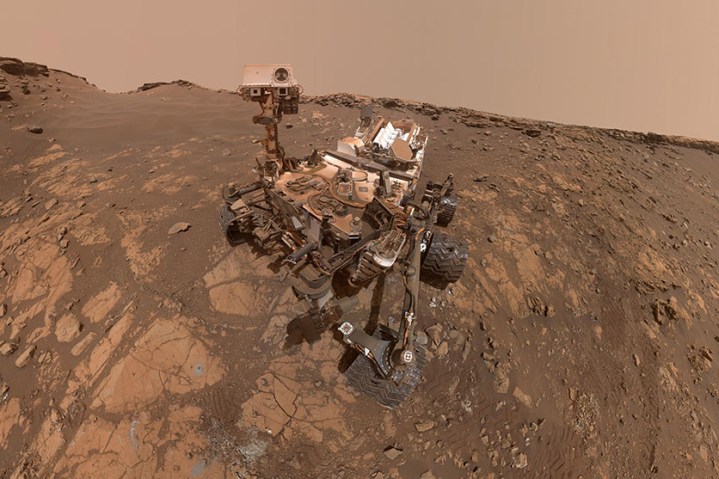NASA’s Curiosity rover, which is currently exploring Mars’ Gale Crater, recently marked an impressive milestone: 4,000 days on Mars. The rover landed more than a decade ago on August 5, 2012, and since then it has continued to explore the area, collect rock samples, and make its way up the epic slopes of Mount Sharp.
The 4,000 days are measured in mission time, which is calculated in martian days or sols. Due to the differing rates of rotation of Earth and Mars, a day on Mars is slightly longer than a day on Earth, by about 40 minutes. And also, due to the difference distances between Earth and Mars and the sun, a martian year is longer too – at 668 sols, equivalent to 687 Earth days. Those working on Mars rover missions, especially the rover drivers, have to operate on Mars time, so their schedules are out of sync with typical Earth working hours and they generally work on 90-sol shifts to allow them time to readjust to Earth schedules.

During its time on Mars, Curiosity has collected 39 samples, using its drill to erode away a few inches of the dusty, soil-like material on the surface called regolith and some layers of rock to access the rock beneath. The latest sample comes from an area named Sequoia, which was drilled on October 17 or the 3,980th martian sol of the mission.
Scientists are interested in studying these samples to learn about the history of water on Mars and how its climate evolved over millions of years. They are particularly looking for sulfates, which are minerals that can form in salty water, and carbonates, which could have formed from the reaction of carbon dioxide in the atmosphere and water on the surface.
“The types of sulfate and carbonate minerals that Curiosity’s instruments have identified in the last year help us understand what Mars was like so long ago. We’ve been anticipating these results for decades, and now Sequoia will tell us even more,” said Ashwin Vasavada, Curiosity’s project scientist at NASA’s Jet Propulsion Laboratory, in a statement.
The rover has now driven a total of 20 miles across the martian surface, and despite some wear and tear on its wheels, it is still going strong. However, the rover will be having a small break soon as Mars will pass behind the sun as seen from Earth, in an event called a solar conjunction. This can interrupt communications, so the team leaves a series of commands for the rover to perform over a period of a few weeks until the conjunction is over and communications can be established once again.



